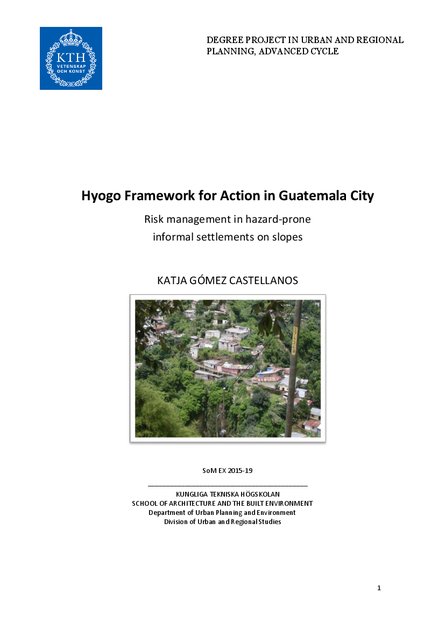
This study aims at assessing the implementation of the international tool for disaster risk management Hyogo Framework for Action 2005-2015. The implementation is assessed in terms of risk management at the level of vulnerable informal settlements in hazard-prone areas on the slopes of Guatemala City. The view of resilience which is used in the framework is discussed and how this relates to risk management in general. It is argued that the framework is based on an engineering resilience view. The aspect of resilience in vulnerable areas is considered, introducing a second view of resilience, the socio-ecological. A related theme that is brought into the analysis is that of power relations.
The study finds that Guatemalan policy and the Guatemalan risk management system have implemented the policies of the Hyogo Framework for Action 2005- 2015. Despite this it has not benefitted the inhabitants of the informal settlements in hazard-prone areas. There are some obstacles in order to make risk management accessible to the informal settlements. There is reluctance on the municipal level to implement the national, Hyogo-influenced, risk management and to recognize and empower the communities in the informal settlements, which hinders the development of an efficient resilience.
The study concludes that for an international tool for risk management to be efficient, it needs to be clearer in its definitions, and more easily applicable through implementation tools. The inherent conclusion of this is that it would be possible for an international tool like the Hyogo Framework for Action 2005- 2015 to be efficient, since there is bureaucratic power supporting it. This power could override local obstacles like political interests. Also, the study concludes that people in informal settlements are resilient to a certain extent, but need to be acknowledged, empowered and cooperated with.